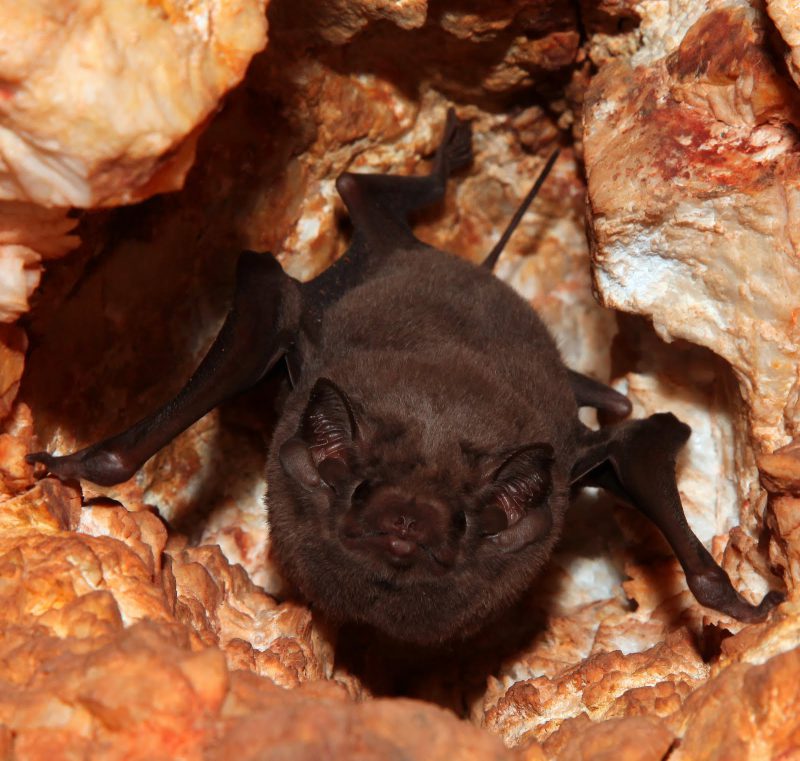This little beauty is Hill’s Sheathtail Bat. While it might have a face that only a mother could love, these little mammals have a crucial role in our ecosystems. We have at least nine species of small insectivorous bats (microchiroptera) here in Alice and while you won’t hear most of them, they are certainly present over much of our night skies.
Bats use high frequency sounds produced in their larynx to navigate and hunt their prey during the night. This is known as echolocation, and has been shown to be used by some bird species as well as bats. Most of these sounds are above the frequency range for most humans to hear.
Bats can call using frequencies of up to 200 kilohertz. Humans usually hear sound up to about 15 kilohertz. Some species of microbat commonly call using frequencies below 15 kilohertz and are therefore often heard by humans. These calls differ from one bat species to another, and using electronic bat detectors and computer software we are able to survey and identify these bats.
In Central Australia, the White-striped Freetail Bat, Tadarida australis, and Yellow-bellied Sheathtail Bat, Saccolaimus flaviventris, are the only two species which commonly call at frequencies audible to humans.
The UNEP Convention on Migratory Species (CMS) and The Agreement on the Conservation of Populations of European Bats (EUROBATS) have declared the Year of the Bat 2011-2012.
To find out more about our local bats you can start at the Australasian Bat Society webpage. The Year of the Bat has its own website and is a great resource for learning about bats worldwide.
Land for Wildlife will work towards holding another of its workshops about Centralian bats during this year of the bat. Keep in mind that Centralian bats are tiny and may be roosting around your property. They will commonly shelter under the bark on living and dead trees, in tree hollows and cracks, and in caves and rock crevices. They will also be found roosting in disused and even occupied buildings. Due to their delicate nature and sharp teeth, bats should not be handled by humans. If you have any questions about or photographs of bats on your property, the Land for Wildlife coordinators would love to hear/see them.
email: lfw@lowecol.com.au
Category:
Uncategorized
